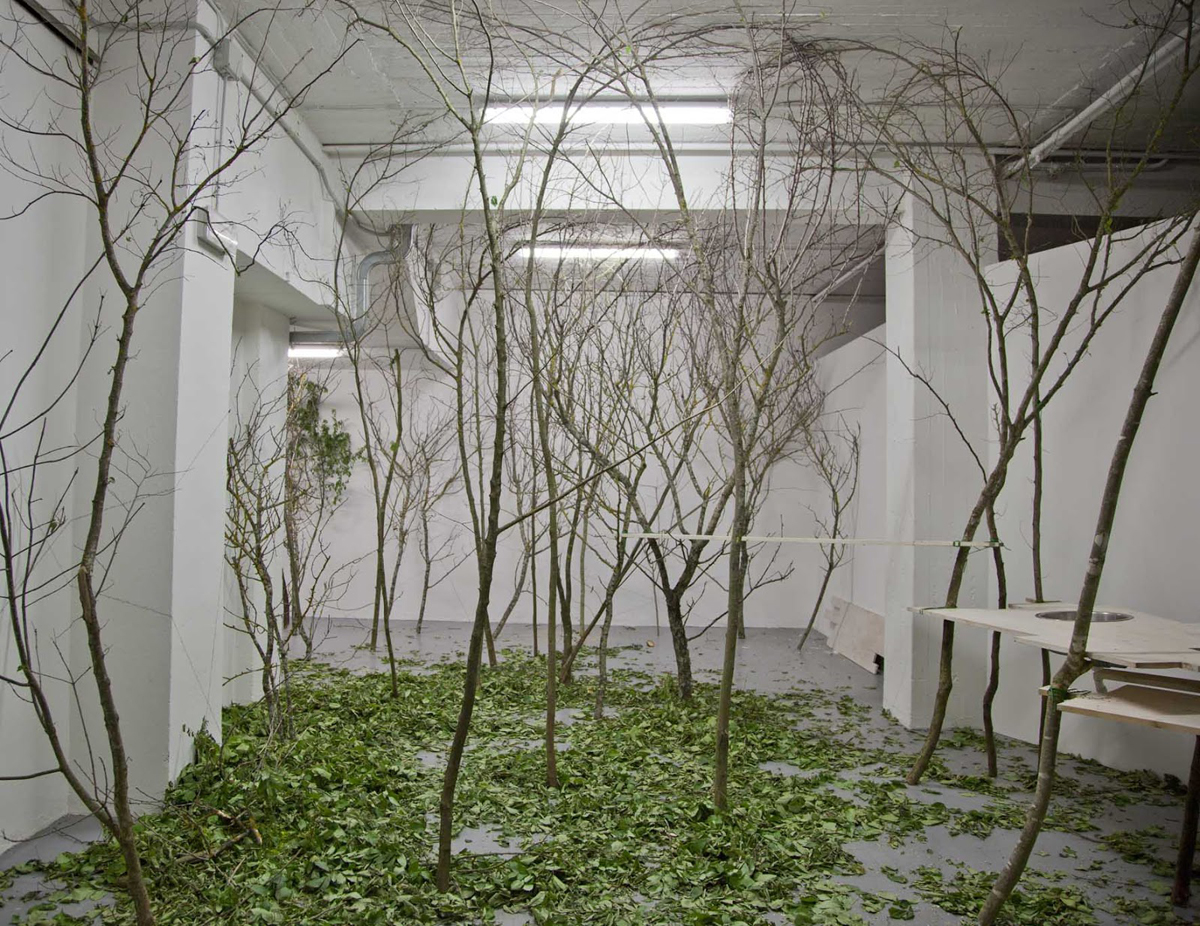Text by Gabi Scardi, Galleria Tiboni, Bologna
2012

Robert Pettena brought the forest into the gallery for Jungle Junction Bar.
The perimeter of the space was occupied by a veritable copse of narrow branches, mostly straight but a few bending over slightly, that held up the platform forming the bar, around which the visitors circulated or stopped for a drink with friends.
Jungle Bar was an elastic, versatile project, that could be moved and built in any environment. It could be expanded or contracted to fit into the space available. One could interpret it in different ways, concentrating on the structure or on the possibilities it offered. It could refer to the idea of sharing and playful pleasure, of bar and agora, or to the complexity of our contradictory needs.
It made you think of houses on stilts, tree houses, urban refuges, but also of current research and development into informal green wood architecture.
The structure of the installation created an environment redolent of nature, yet artificial, seemingly spontaneous yet intentional, evocative of adventure but functional, inviting one to explore, while being comfortable and enjoyable. It did not appear to have been designed by anyone, while it was in fact the fruit of a precise project, based on the one hand on a rich and multifaceted conceptual plan. On the other hand the planning was organised with precision, using two principal elements: vertical branches and horizontal planks.
Jungle Bar invited visitors to live with simplicity, to interpret with freedom so that the structure disrupted the self-referential static which sees the work as the centre of the exhibition and the centre of attention. This installation came to life thanks to the visitors who filled the spaces within it and made the work dynamic, creating sound and atmosphere.
So the work and the public became one. That was not all; the construction became theatrical since the visitors became protagonists. It was a kind of scenery in which every action was naturally emphasised. It expressed a performative character at a time when doing and appearing seemed to be the same thing.
Jungle Bar allowed us to have fun while immersed in nature, to be in the bar but also in the gallery…Robert Pettena, always aware of the constant transformation of social life, brought to life the discrepancy between our very diverse aspirations, our opposite needs and contradictions. But he said that, there was no need to resolve or remove this complexity. Within it was a richness that we could indulge and satisfy.
His work therefore went way beyond reflection on the concrete form, not just because of its aspect and the materials it was made out of. Jungle Bar influenced the quality of the activity that went on in it. It became a filter through which to reflect on the relationship between internal and external, space in the gallery and surroundings, between the world of art and that of life.
Speaking about the gallery as space for sharing, and talking about the need to pause, this work allowed the public to have fun while at the same time incarnating the spirit of the time. It also invited us to think about something new for the future.
Gabi Scardi











